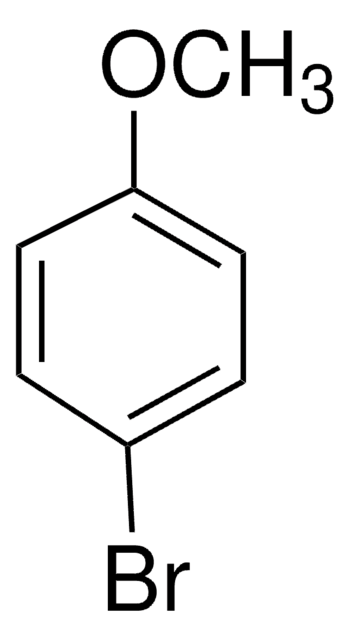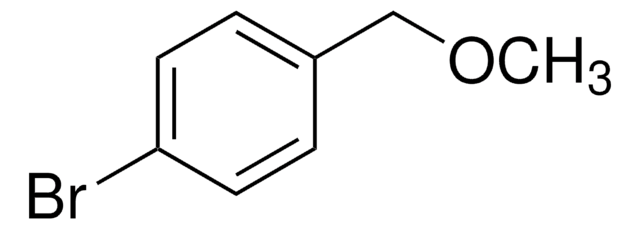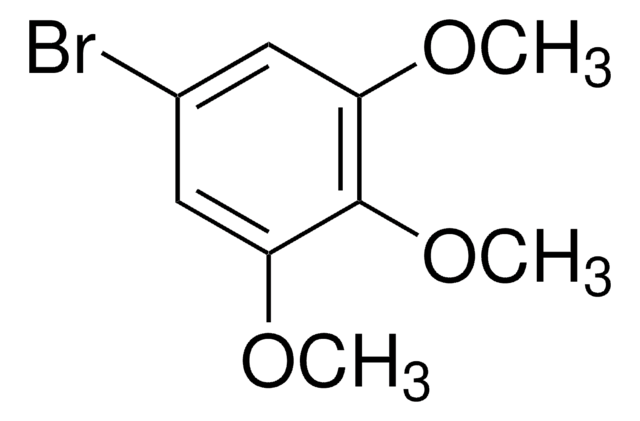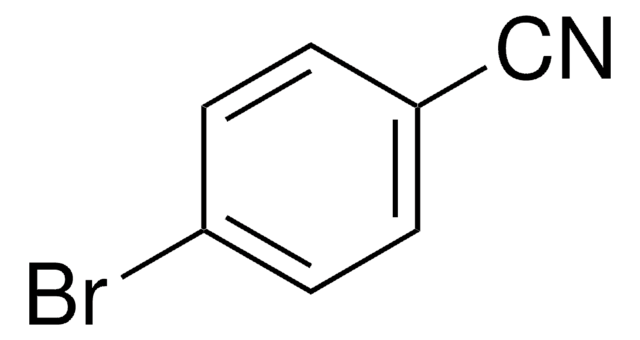All Photos(1)
Synonym(s):
(4-Bromobutoxy)benzene, 4-Phenoxybutyl bromide, Phenoxybutyl bromide
Linear Formula:
C6H5OCH2CH2CH2CH2Br
CAS Number:
Molecular Weight:
229.11
EC Number:
MDL number:
UNSPSC Code:
12352100
PubChem Substance ID:
NACRES:
NA.22
Recommended Products
Assay
97%
form
solid
bp
153-156 °C/18 mmHg (lit.)
mp
41-43 °C (lit.)
SMILES string
BrCCCCOc1ccccc1
InChI
1S/C10H13BrO/c11-8-4-5-9-12-10-6-2-1-3-7-10/h1-3,6-7H,4-5,8-9H2
InChI key
QBLISOIWPZSVIK-UHFFFAOYSA-N
Looking for similar products? Visit Product Comparison Guide
WGK
WGK 3
Flash Point(F)
Not applicable
Flash Point(C)
Not applicable
Personal Protective Equipment
dust mask type N95 (US), Eyeshields, Gloves
Regulatory Information
新产品
Certificates of Analysis (COA)
Search for Certificates of Analysis (COA) by entering the products Lot/Batch Number. Lot and Batch Numbers can be found on a product’s label following the words ‘Lot’ or ‘Batch’.
Already Own This Product?
Find documentation for the products that you have recently purchased in the Document Library.
Jun Terao et al.
Chemistry, an Asian journal, 3(8-9), 1472-1478 (2008-07-10)
Regioselective double alkylation of styrenes with alkyl Grignard reagents and alkyl bromides having a heteroatom functional group at the beta-position has been achieved by the use of a titanocene catalyst in THF. When ether was used instead of THF as
Electrochemical reduction of 1, 4-dihalobutanes at carbon cathodes in dimethylformamide.
Pritts WA and Peters DG.
Journal of Electroanalytical Chemistry, 380(1), 147-160 (1995)
Johan R Johansson et al.
The Journal of organic chemistry, 76(7), 2355-2359 (2011-03-11)
An experimentally simple sequential one-pot RuAAC reaction, affording 1,5-disubstituted 1H-1,2,3-triazoles in good to excellent yields starting from an alkyl halide, sodium azide, and an alkyne, is reported. The organic azide is formed in situ by treating the primary alkyl halide
Our team of scientists has experience in all areas of research including Life Science, Material Science, Chemical Synthesis, Chromatography, Analytical and many others.
Contact Technical Service







